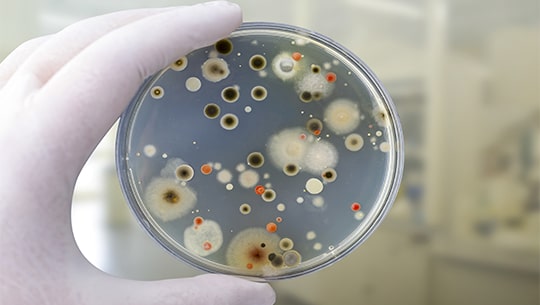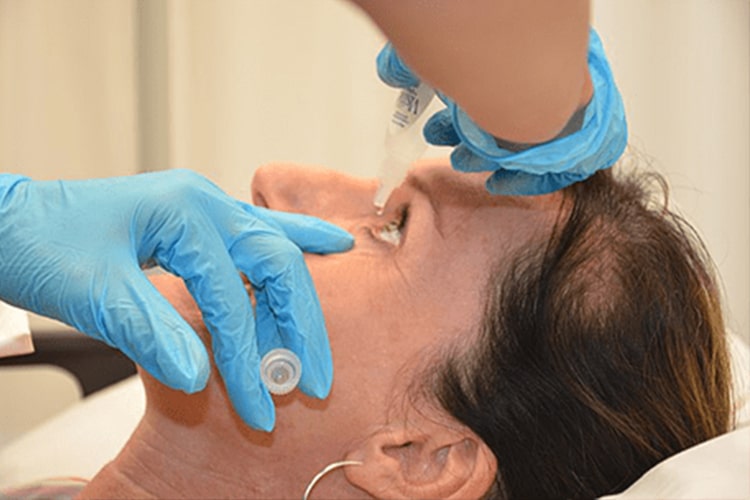When it comes to eye infections, most people assume that they’re caused by viruses, allergies, or foreign matter in the eyes. However, a recent case in the United States has shown that bacteria can also be a culprit. A woman in Ohio was diagnosed with a rare bacterial infection in her eye and it took months to diagnose and track down the cause that ultimately blinded her left eye.
The Beginning of a Nightmare
The woman, 72-year-old Nancy Montz, was able to rule out contacts or swimming in the nearby lakes as she doesn’t wear contacts and it was too cold to swim in the chilly northeastern Ohio lakes in November, ruling those sources out for the unusual bacterium. Montz’s infection came from a contaminated bottle of EzriCare artificial tears, which has been linked to dozens of similar eye infections nationwide, with the Centers for Disease Control and Prevention reporting that 68 people in 17 states were diagnosed as of March 14th, 2023.
Montz first realized something was wrong when she woke up to find a smear of yellow discharge on her pillow and trouble seeing out of her left eye, which was now cloudy. She thought her left eye looked odd, but she didn’t have any pain or soreness in that eye due to a prior health problem causing numbness on that side of the face.
With encouragement from her husband, Montz sought treatment from a doctor, who prescribed antibiotics. However, the antibiotics that normally worked, didn’t in this case and, within 48 hours, Montz’s eye became even worse. The doctor’s team eventually discovered that the bacteria that was the cause of the infection was also in the bottle of artificial tears that Montz had ordered through Amazon. They hypothesized that Montz had accidentally scratched her eye with the dropper and didn’t realize it because she had no feeling in that eye, and the scratch allowed the infection to easily enter the eye.

The Bacterium
The bacterium in question was Pseudomonas aeruginosa, which is resistant to most antibiotics, and Montz’s doctor, Dr. Morgan Morelli, had never seen that type of bacteria in the eye. Dr. Morelis specializes in infectious diseases and is the chief fellow in the division of infectious diseases and HIV medicine at the University Hospitals Cleveland Medical Center.
Pseudomonas aeruginosa is an opportunistic bacterium that causes various infections in humans and is commonly found in water, soil, and vegetation. In hospitals, it can colonize wet environments such as sinks, toilets, oxygen respirators, and other places. The bacterium has a remarkable ability to adapt to diverse conditions, making it a formidable pathogen that can cause infections in the respiratory and urinary tracts, wounds, skin, and in those with weakened immune systems. For medical professionals, the bacterium’s resistance to many antibiotics means that it poses significant challenges for the treatment necessary to maintain human health.
Other Cases
Of the 68 other cases, eight of those patients have lost vision in at least one of their eyes, four others have required the surgical removal of the affected eyeballs, and three others have died. One other case involved a 93-year-old man in Miami named Juan Lopez who used the same brand of artificial tears that Montz used. He had used the products for months before developing an eye infection and a 103-degree fever before requiring hospitalization. He was one of many affected people who were successfully treated.
Ohio and Florida aren’t the only states with recorded cases: the other states include California, Colorado, Connecticut, Illinois, Nevada, New Jersey, New Mexico, New York, North Carolina, Pennsylvania, South Dakota, Texas, Utah, Washington, and Wisconsin.
Preventing a Personal Nightmare
Protecting oneself from Pseudomonas aeruginosa primarily involves practicing good hygiene and taking the necessary precautions. Firstly, regular and thorough handwashing with soap and water is essential, especially after using the restroom, before eating, or coming into contact with a potentially contaminated surface. It’s crucial to maintain clean and well-sanitized living spaces, particularly in healthcare settings. Following proper wound care protocols, such as keeping cuts and wounds clean and covered, also helps to minimize the risk of infection.
Additionally, individuals with weakened immune systems should take extra precautions to avoid exposure to this bacterium. These steps include avoiding close contact with individuals who have active infections, especially in healthcare settings. Patients with existing medical conditions should strictly adhere to instructions regarding infection prevention and control. Furthermore, it’s important to be aware of and follow the guidelines followed by healthcare facilities and professionals, particularly when visiting or staying in the hospital. These guidelines include proper hand hygiene, wearing protective garments, and other protocols.
Dr. Morelli has a few tips to follow to minimize the risk of eye infections for those who use eye drops. Wash your hands before opening eye drop bottles, keeping the tip of the dropper as sterile as possible and avoiding contact with fingers or other surfaces before you replace the cap. Avoid using refillable eyedrop bottles, and make sure you dispose of expired products. Finally, only use artificial tears and other eye drops that your doctor recommends.

According to the CDC, if you have used “EzriCare or Delsam Pharma’s artificial tears” and are experiencing signs or symptoms of an eye infection, it is important to seek medical attention right away. Be vigilant and watch out for specific symptoms such as yellow, green, or clear discharge from the eye, redness of the eye or eyelid, discomfort or pain in the eye, feeling like there’s something in your eye, blurry vision, or even increased sensitivity to light. Prompt medical care can help identify and treat any potential eye infection, ensuring the best possible outcome for your eye health.
The recent cases involving contaminated artificial tears highlight the potential risks of bacterial eye infections caused by Pseudomonas aeruginosa from objects we use every day. It’s easy to take commonplace items and devices for granted and forget how dangerous they can become when we don’t take the time to clean and sanitize surfaces to protect ourselves from infections. Practicing good hygiene, by keeping living spaces clean, handwashing, following wound care protocols, and other hygienic habits, is essential. By taking preventative steps, we can reduce the likelihood of experiencing a personal nightmare due to bacterial eye infections and other infections.
SOURCES
https://www.nbcnews.com/health/health-news/bacteria-eyedrops-took-months-diagnose-womans-eye-infection-rcna83816
https://bmcinfectdis.biomedcentral.com/articles/10.1186/s12879-021-05883-5
https://www.ncbi.nlm.nih.gov/books/NBK8326
https://www.nbcnews.com/health/health-news/recalled-eyedrops-causing-blindness-know-drug-resistant-bacteria-rcna78541
https://www.axios.com/2023/03/23/eye-drop-recalls-2023-pseudomonas-aeruginosa-outbreak
FEATURED IMAGE SOURCE: WIKICOMMONS

